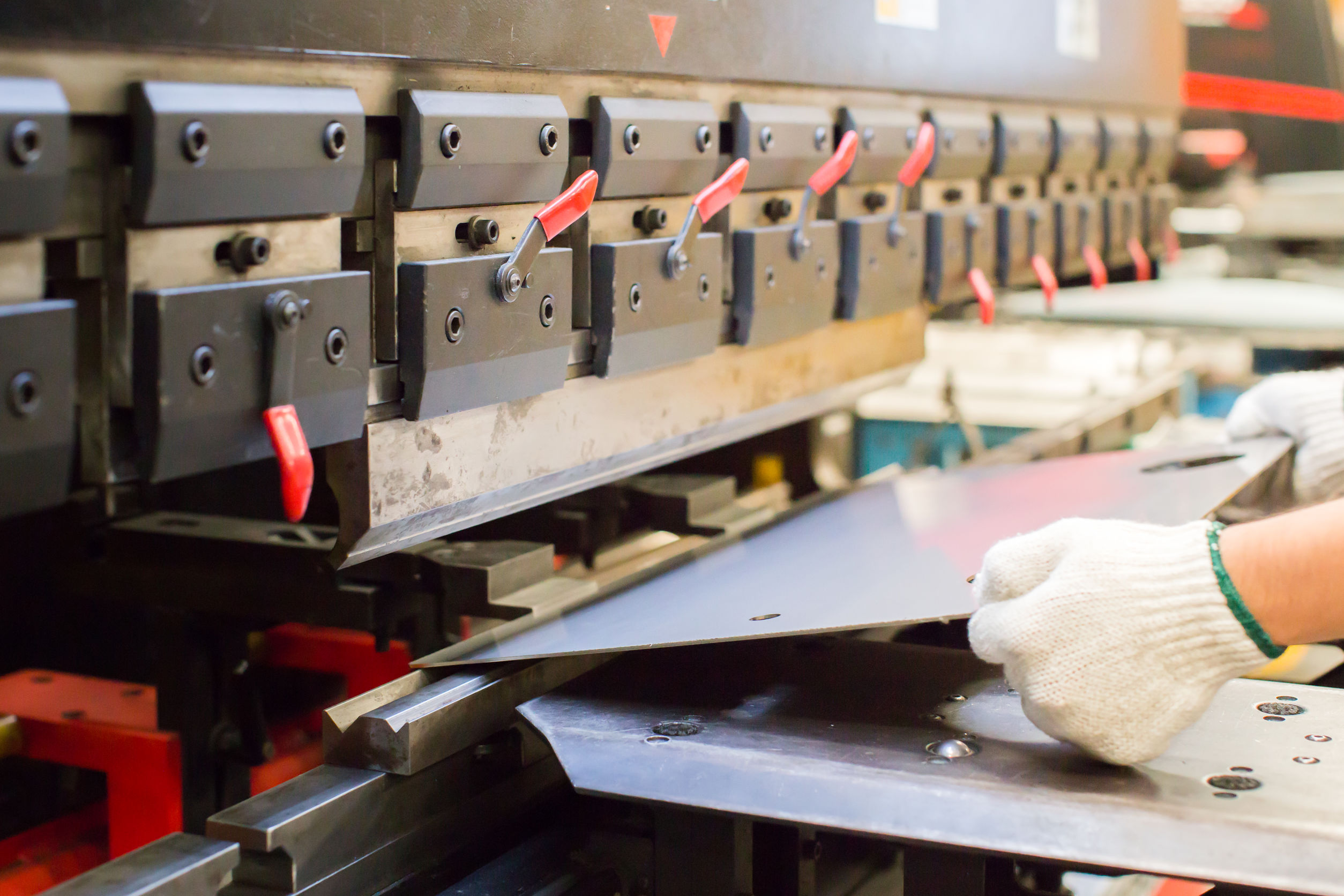A hydraulic press brake is an essential tool in the commercial and industrial fabrication process, as it allows shops to create precise bends and folds in metal sheets. Whether you’re working with stainless steel, aluminum, or other metals, a hydraulic press brake provides the power and control needed to achieve accurate and consistent results. Below, we’ll explore how hydraulic press brakes work, their key components, and the advantages they offer over other types of press brakes.
What Is a Hydraulic Press Brake & How Does It Function?
A hydraulic press brake is a machine used to bend and shape metal by applying pressure through a hydraulic system. The press brake consists of several key components, including:
- A ram – The upper part of the press brake that moves up and down to apply pressure on the metal sheet.
- A bed – The lower part where the metal sheet is placed.
- Hydraulic cylinders – These are responsible for driving the ram with the required force.
- A punch and a die – The punch is attached to the ram and presses the metal into the die, which is mounted on the bed, creating the desired bend.
- A CNC controller – The controller allows for precise adjustments and automation to ensure that each bend is accurate and consistent.
The hydraulic system in the press brake uses fluid pressure to move the ram. By adjusting the pressure, the operator can control the force applied, making hydraulic press brakes versatile and suitable for a wide range of applications.
Utilization of Hydraulic Press Brakes in Fabrication
Hydraulic press brakes are commonly used in various industries, including automotive, aerospace, construction, and manufacturing. These machines are integral to the fabrication of parts such as brackets, frames, panels, and enclosures. In the automotive industry, for instance, hydraulic press brakes are used to form body panels, chassis components, and other critical parts. In construction, they are employed to fabricate structural elements like beams and columns, which are essential for building frameworks.
Advantages of Hydraulic Press Brakes Over Mechanical & Electric Variants
Hydraulic press brakes offer several advantages compared to mechanical and electric press brakes. One of the primary benefits is the control over the bending process. Hydraulic press brakes allow for variable pressure, meaning the operator can adjust the force applied to the material, enabling precise control over the bend angle and radius. This flexibility is not as easily achieved with mechanical press brakes, which rely on a fixed force for each operation.
Hydraulic press brakes are also capable of handling thicker materials and larger sheets of metal, providing more power than electric press brakes. Additionally, the hydraulic system distributes force evenly, reducing the risk of material deformation and ensuring consistent results across the entire workpiece.
Machitech Hydraulic & Electric Press Brakes
Machitech offers a comprehensive range of CNC press brakes, available in both hydraulic and electric models, to meet the diverse needs of industrial and commercial fabricators. Our hydraulic press brakes, with capacities ranging from 40 to 2,000 tons, are equipped with advanced features that allow for effortless operation, prolonged performance, and maximum accuracy.
For those seeking quieter, low-maintenance options, Machitech’s electric press brakes, with capacities from 40 to 200 tons, are an excellent choice. Whether you choose hydraulic or electric, Machitech press brakes come with on-site installation and training, so your team will be able to start bending with confidence.
Enhance Your Fabrication Process
Want to learn more about the hydraulic and electric press brakes Machitech offers? Contact us today to discuss your needs.
 English
English  Français
Français 
